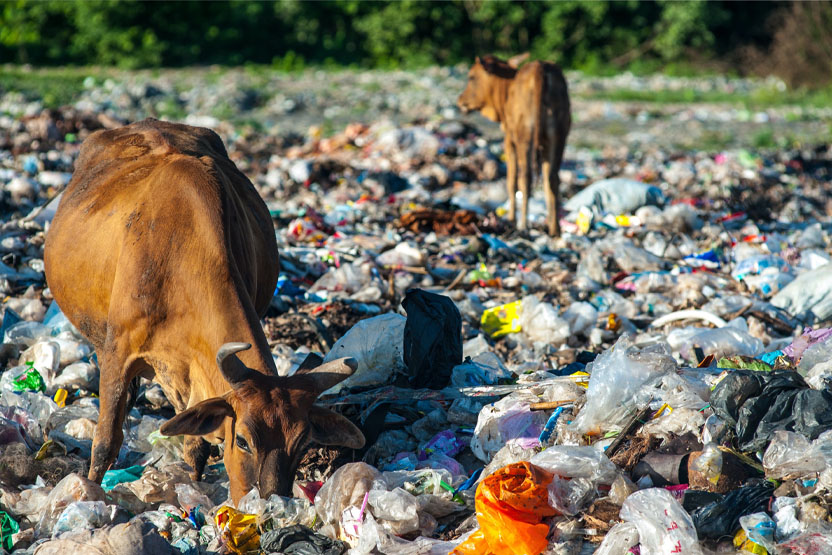
Negotiations in Geneva aimed at drafting the world’s first treaty to curb plastic pollution ended in failure after ten days of talks, leaving international efforts back at square one. Delegates were unable to agree on binding measures to cut plastic production or even set a timetable for the next round of negotiations.
More than 100 countries had pressed for restrictions on production, but the initiative was blocked by major oil-producing states, industry groups, and fossil fuel and plastics lobbyists, who argued that such measures were unnecessary and economically damaging. Their resistance effectively derailed what was the sixth and final negotiating session since talks began in 2022.
The breakdown means that global strategies will continue to rely on recycling, reuse, and product redesign — approaches that powerful producer nations insist are sufficient, but that environmental groups and experts dismiss as inadequate.
“Governments’ failure to reach an agreement in Geneva should be a wake-up call for the world,” said Farah Al-Hattab, Greenpeace MENA’s representative at the talks. “Every delay comes at a cost to both people and the planet.”
Each year, the world produces around 450 million tons of new plastic, a figure the OECD warns could rise by 70 percent by 2040. Much of it ends up in landfills, oceans, soils, forests, rivers, and even the air, breaking down into microplastics that have been detected in human organs as well as in wildlife.
Plastic pollution is not only an environmental threat but also a climate issue. Because nearly all plastics are derived from fossil fuels, they are a major source of greenhouse gas emissions. In 2019 alone, plastics generated 3.4 percent of global emissions — 1.8 billion tons — according to the United Nations.
The Recycling Debate
Despite being touted as a solution, recycling remains limited and highly inefficient. Different types of plastics have varying chemical compositions, making it costly, time-consuming, and heavily dependent on manual sorting. According to the OECD, only 6 percent of all plastic ever produced is actually recycled. Greenpeace has also stressed that most plastics labeled “recyclable” never are, due to high costs, complex logistics, and the environmental impacts of recycling facilities themselves.
“Plastic is not like paper, metals, or glass,” said Judith Enck, president of Beyond Plastics. “There are thousands of chemical additives, countless polymers, and multiple colors. By design, it is not easy to recycle.”
Recycling rates for other materials remain far higher: about 71 percent for steel cans, 64 percent for paper, and 74 percent for cardboard, according to U.S. industry associations. Glass has a recycling rate of roughly 31 percent, according to the U.S. Environmental Protection Agency.
The plastics industry insists innovation can improve recycling outcomes. Ross Eisenberg, president of the Plastics Industry Association, has called for a “comprehensive approach” that includes new recycling infrastructure and better sorting systems, alongside efforts to educate consumers.
But experts warn that placing the burden on consumers is impractical. “Expecting households to pre-sort plastics is unrealistic, and municipalities are unlikely to invest heavily in recycling infrastructure if there’s no financial incentive or market for the material,” said Holly Kaufman, project director on plastics and climate and a fellow at the World Resources Institute.
Kaufman also pointed out that recycling facilities often pollute local air, water, and soil, creating additional public health concerns. Mechanical recycling typically involves blending old and new plastics with chemical additives, releasing microplastics into the environment.
Some scientists argue that recycling is little more than a marketing tool to ease consumer guilt while production keeps rising. The U.S.-based Center for Climate Integrity described it as “the Big Plastic Lie.” Its president, Richard Wiles, said: “Fossil fuel companies that lied for decades about their role in climate change also lied about plastic recycling.”
In fact, California has filed a lawsuit against ExxonMobil, accusing the oil giant of misleading the public about the recyclability of plastics. For Kaufman, the real solution is clear: “We must drastically cut plastic production, use, and waste — not just recycle more of it.”
Beyond Recycling: Reuse and Redesign
Industry advocates promote reuse and redesign as alternatives. Eisenberg points to refillable containers and more durable resealable bags as examples of extending product lifespans and reducing waste.
Experts agree reuse is valuable, but warn of risks such as microplastic contamination. Redesign, meanwhile, often means making packaging from a single material or integrating labels into containers to ease recycling. Kaufman also highlights the potential of sustainable alternatives, such as seaweed-based packaging. While promising, such solutions remain far from widespread adoption.


Comment